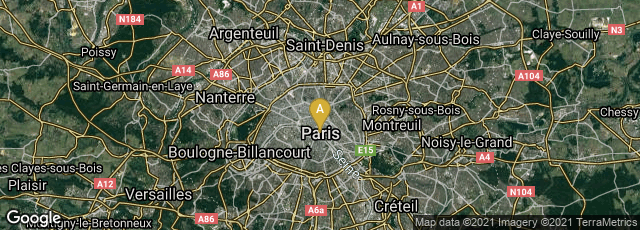

A: Paris, Île-de-France, France
In 1884 French engineer Philbert Maurice d'Ocagne invented a type of graphical calculating device called the nomogram or nomograph. This was two-dimensional diagram designed to allow the approximate graphical computation of a mathematical function. Nomograms were used extensively for many years to provide engineers with fast graphical calculations of complicated formulas to a practical precision. They use a parallel coordinate system invented by d'Ocagne rather than standard Cartesian coordinates.
In 1891 Ocagne published Nomographie, les calculs usuels effectués au moyen des abaques. In this work on nomograms he
"presented the first outline of a rationally ordered discipline embracing all the individual procedures of nomographical calulation then known. Pursuing this subject, he succeeded in defining and classifying the most general modes of representation applicable to equations with an arbitrary number of variables. The results of all these investigations, along with a considerable number of applications . . . [he] set forth in Traité de nomographie (1899), which was followed by other more or less developed expositions. This material appeared in fifty-nine partial or entire translations in fourteen languages" (Dictionary of Scientific Biography X [1974] 170).